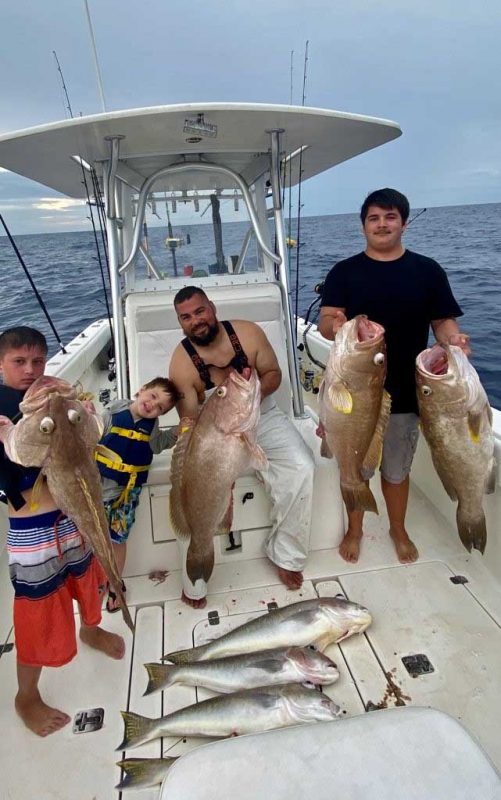
The summer months are gone, and we now have November upon us. It is now the time of year that cool fronts will start coming in and small boaters will need to watch the weather forecast.
When the conditions allow, you can run offshore, and the mahi should be heading south. This time of year, I usually start looking for them when reaching depths of 60 feet. Have ballyhoo (or trolling lures) and chunk bait on hand. Trolling ballyhoo is a known method for finding and catching these fish, but if live baits are available, it is always a good idea to bring some along for when the mahi are located. Troll ballyhoo at five-to-seven knots, naked or with colored skirts to cover more ground when searching. When mahi are located around floating debris or weedlines, switch to some live bait, if available, or throw out some chunk bait to start a feeding frenzy. If you choose to troll a weedline with live bait, lower your trolling speed to idle speed and try to keep the weedline on one side of your boat to avoid getting your live bait hung up in the weeds. When slow trolling a weedline, have one bait in the spread placed at a deeper depth than the rest using a planer or downrigger, sometimes the larger mahi run deeper under a school of smaller fish. When a hooked mahi gets boat side, leave him in the water as its splashing may attract other mahi in the area, if so, you can pitch live or chunk bait to them and try to catch a few more.
On the days that are not good for a long run offshore, just look outside the inlets. Big schools of Spanish mackerel will be arriving. These fish are fun to target and great on the table. When exiting your inlet, just look for birds diving into schools of fish on the surface. The Spanish mackerels will school around the glass minnows and while they are eating you will see the Spanish mackerels jumping out of the water. Spanish mackerels will eat shrimp, but the best way to hook up these fish is to troll a small spoon around the schools or cast a small spoon, mylar jig or shiny top water lure into the school. When doing this, troll at about two-to-three knots or reel the lure fast. A small Clark Spoon or Drone Spoon from 1 ½ inches to 2 inches is a good size. A good recommendation when fishing for Spanish mackerel is to use a one to two inch piece of #3 or #4 wire in front of your lures so the teeth of the mackerel don’t cut off your lure and make it an expensive trip. A good setup for catching these fish would be a light 10-to-15-pound rod and reel matched with up to 12-pound mainline and a 20-pound leader.
Enjoy your time on the water and be safe. Do your homework and check the weather forecasts before going out. Catch them up!
FORECAST BY: Capt. Danny Markowski
LottaBull Fishing Charters
Phone: (772) 370-8329
Email: lottabull4@bellsouth.net
www.lottabullfishingcharters.com




